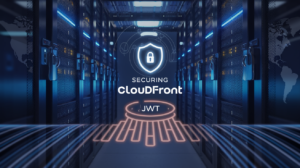Nothing ruins a good day like getting that dreaded 3 AM call about your production system being down. For DevOps engineers, system administrators, and tech leads who’ve been there (or want to avoid being there), proper infrastructure design best practices can be the difference between peaceful nights and constant firefighting.
This guide is for engineering teams, DevOps professionals, and technical decision-makers who need to build systems that actually work when it matters. We’ll walk through the essential strategies that prevent those heart-stopping moments when everything goes wrong at once.
You’ll discover how to plan your foundation to stop system failures before they start, implement scalability strategies for businesses that won’t buckle under growth, and set up system monitoring and alerting that catches problems while you can still fix them quietly. We’ll also cover the infrastructure security measures and zero downtime deployment practices that keep your users happy and your phone silent.
Foundation Planning That Prevents System Failures
Assess actual capacity requirements before building
Start by measuring real user patterns and traffic data instead of guessing. Study historical usage peaks, seasonal spikes, and growth trends from similar systems. Create load profiles that reflect actual user behavior – concurrent connections, data throughput, and processing demands. This data-driven approach prevents over-provisioning expensive resources while ensuring adequate performance under real conditions.
Design for peak load scenarios from day one
Build your infrastructure design best practices around your highest expected traffic, not average usage. Plan for Black Friday sales, viral content moments, or marketing campaign surges. Design database connections, server capacity, and network bandwidth to handle 3-5x normal load without degradation. This upfront investment costs less than emergency scaling during traffic spikes that crash your system.
Plan redundancy at every critical layer
Remove single points of failure across your entire stack. Deploy multiple application servers behind load balancers, use database clusters with automatic failover, and distribute services across availability zones. Implement backup systems for critical components like payment processing, user authentication, and data storage. Test failover scenarios regularly to ensure seamless transitions when primary systems fail.
Document architectural decisions and dependencies
Create clear documentation explaining why specific technologies and patterns were chosen for production system failures prevention. Map service dependencies, data flows, and integration points between components. Include troubleshooting guides, configuration details, and rollback procedures. This knowledge base becomes invaluable during outages, team transitions, and system updates when quick decision-making prevents extended downtime.
Scalability Strategies That Grow With Your Business
Implement horizontal scaling patterns early
Horizontal scaling lets you add more servers instead of upgrading existing ones when traffic spikes. Load balancers distribute requests across multiple application instances, while auto-scaling groups automatically spin up new servers based on CPU or memory usage. Container orchestration platforms like Kubernetes make this process seamless by managing workload distribution and resource allocation across your infrastructure automatically.
Design stateless applications for easy expansion
Stateless applications store no user data on individual servers, making them perfect for scalable system architecture. Session data lives in external stores like Redis or databases, allowing any server to handle any request. This design pattern enables instant scaling since new instances require no warm-up time or data synchronization, dramatically simplifying your deployment practices and infrastructure design best practices.
Choose databases that handle growth gracefully
Database selection impacts your entire scalability strategy. Distributed databases like MongoDB or Cassandra handle massive datasets across multiple nodes, while read replicas reduce load on primary databases. Implement database sharding early to partition data effectively, and consider managed services like Amazon RDS or Google Cloud SQL that automatically handle scaling, backups, and maintenance tasks for your growing business needs.
Monitoring Systems That Catch Issues Before Users Do
Set up comprehensive health checks across all services
Every service in your infrastructure needs multiple layers of health checks to catch problems before they cascade. Start with basic ping checks, then add application-level health endpoints that verify database connections, external API availability, and critical business logic. Configure checks at different intervals – shallow health checks every 30 seconds and deep dependency checks every few minutes.
Create meaningful alerts that drive action
Poor alerting creates alert fatigue and masks real emergencies. Set up alerts that include context about what’s broken, potential impact, and suggested remediation steps. Use severity levels that map to response times – critical alerts for revenue-impacting issues, warnings for degraded performance. Route alerts to the right teams based on service ownership and include runbook links in every notification.
Establish performance baselines and thresholds
Production environment monitoring requires understanding normal behavior patterns before setting thresholds. Collect baseline metrics during low, medium, and peak traffic periods across at least two weeks. Set warning thresholds at 80% of capacity and critical alerts at 90%. Review and adjust these baselines monthly as your system evolves and traffic patterns change.
Build dashboards that show system health at a glance
Effective dashboards tell a story about your system’s health without overwhelming viewers. Create role-specific views – executives need high-level availability metrics, while engineers need detailed performance breakdowns. Use the RED method (Rate, Errors, Duration) for services and the USE method (Utilization, Saturation, Errors) for resources. Include business metrics alongside technical ones to show real impact.
Security Measures That Protect Against Real Threats
Implement defense-in-depth security layers
Building robust infrastructure security means creating multiple barriers that attackers must breach. Start with network segmentation to isolate critical systems, implement firewalls at every boundary, and deploy intrusion detection systems. Add endpoint protection, regular vulnerability scanning, and access controls that follow the principle of least privilege. Each layer provides backup protection when others fail.
Secure network communication between all components
Encrypt all data in transit using TLS 1.3 or higher between services, databases, and external APIs. Configure VPNs for remote access and implement network access control lists to restrict traffic flow. Use service meshes like Istio to automatically handle encryption between microservices. Monitor network traffic for anomalies and establish secure baselines for normal communication patterns.
Manage secrets and credentials safely
Store sensitive data in dedicated secret management systems like HashiCorp Vault, AWS Secrets Manager, or Azure Key Vault. Never hardcode passwords, API keys, or certificates in source code or configuration files. Implement automatic secret rotation and use short-lived tokens where possible. Apply role-based access controls to secrets and audit all access attempts regularly.
Plan for disaster recovery and data protection
Create automated backup systems that store copies in multiple geographic locations with regular testing procedures. Define recovery time objectives (RTO) and recovery point objectives (RPO) for different system components. Document step-by-step disaster recovery procedures and conduct quarterly drills with your team. Implement point-in-time recovery capabilities and maintain offline backup copies to protect against ransomware attacks.
Deployment Practices That Minimize Downtime Risk
Use Blue-Green Deployments for Zero-Downtime Releases
Blue-green deployments run two identical production environments simultaneously, switching traffic instantly between them. Deploy new versions to the inactive environment, test thoroughly, then redirect users seamlessly. This zero downtime deployment strategy eliminates service interruptions and provides immediate fallback options when issues arise during releases.
Implement Automated Rollback Mechanisms
Automated rollback systems monitor deployment health metrics and trigger instant reversions when performance thresholds are breached. Configure automated switches based on error rates, response times, and system resource usage. These mechanisms detect problems faster than manual monitoring and restore service within seconds, protecting user experience from deployment-related issues.
Test Thoroughly in Production-Like Environments
Staging environments must mirror production infrastructure exactly – same hardware specs, network configurations, and data volumes. Load testing with realistic traffic patterns reveals performance bottlenecks before they impact users. Database migrations, API integrations, and third-party services should behave identically across environments to catch deployment surprises early.
Establish Clear Deployment Procedures and Checkpoints
Document every deployment step with mandatory verification checkpoints between phases. Create deployment checklists covering database migrations, configuration updates, and service dependencies. Define rollback criteria and assign specific team members to monitor different system components. Clear procedures reduce human error and ensure consistent, repeatable deployments across all team members.
Performance Optimization That Keeps Users Happy
Optimize Database Queries and Connection Pooling
Database performance directly impacts user experience. Slow queries create bottlenecks that cascade through your entire system. Index your frequently queried columns, avoid N+1 queries, and use query profiling tools to identify problematic statements. Connection pooling prevents the overhead of establishing new database connections for each request. Set appropriate pool sizes based on your application’s concurrency needs – too few connections create queuing delays, while too many overwhelm your database server. Monitor connection usage patterns and tune pool configurations accordingly.
Implement Effective Caching Strategies
Smart caching reduces database load while speeding up response times. Layer your caching strategy with Redis or Memcached for frequently accessed data, CDNs for static assets, and application-level caching for computed results. Cache invalidation requires careful planning – implement time-based expiration for data that changes regularly and event-based invalidation for critical updates. Consider cache warming strategies during deployment to prevent cold cache performance hits. Monitor cache hit ratios and adjust your strategy based on actual usage patterns rather than assumptions.
Minimize Network Latency Through Smart Architecture Choices
Network latency kills user satisfaction faster than most other performance issues. Deploy your application performance optimization infrastructure closer to users through edge locations and regional data centers. Compress responses using gzip or Brotli compression algorithms. Bundle and minify JavaScript and CSS files to reduce the number of round trips. Use HTTP/2 to enable multiplexing and server push capabilities. Design your APIs to minimize chattiness – prefer fewer requests with more data over many small requests. Consider async processing for non-critical operations that don’t need immediate responses.
Building robust infrastructure isn’t just about having the latest tools or the biggest servers. It’s about making smart decisions early on that save you from those 3 AM panic calls when everything goes wrong. Strong foundation planning, smart scalability choices, proactive monitoring, solid security, careful deployments, and performance tuning work together to create systems that actually work when your users need them most.
The best infrastructure teams don’t wait for problems to happen – they design systems that prevent them. Start with one area where your current setup feels shaky, whether that’s monitoring gaps or deployment fears. Pick the practice that would give you the biggest peace of mind and build from there. Your future self (and your sleep schedule) will thank you for taking the time to get these fundamentals right.













